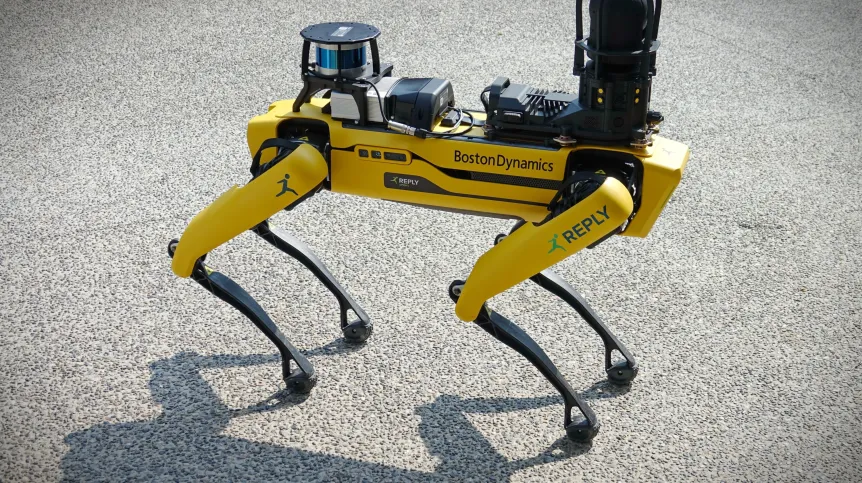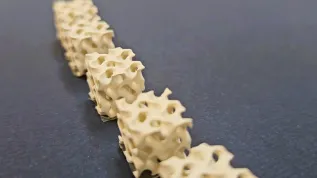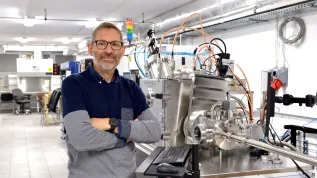
For robots to be able to walk as easily as humans, many challenges must be overcome, including programming, material testing, and power supply.
Polish expert Dr. Krzysztof Walas summarises these problems in a paper in Science Robotics.
Some robots - from the mobile robot dog SPOT to the humanoid Digit and the running Cassie - can jump, dance and walk on uneven terrain. However, there is still a long way to go full of trips, falls and stumbling before robots can move freely.
In a paper published in Science Robotics, Dr. Walas, leader of the research team 'Robotics of physical interaction' at IDEAS NCBR explains the challenges their creators have to face.
Recently, Dr. Krzysztof Walas was the first Pole to become a member of the management board of the international technological network ADRA (AI, Data and Robotics Association) at the European Commission. This institution focuses its activities around artificial intelligence, robotics and data.
IDEAS NCBR press release summarises the publication of the Polish researcher in Science Robotics.
CHALLENGE 1: PROGRAMMING
Creating software for walking robots is a difficult task. Developers must choose between different machine learning methods. Each such choice is burdened with risk, because each method has both advantages and drawbacks.
A: One of these methods is supervised learning, which involves the robot 'learning' based on large amounts of data. However, this process is relatively slow because it requires time to collect a large enough data set to produce good results.
B: Another option is reinforcement learning, i.e. the robot learns by trial and error, just like a child learning to walk. It is rewarded for the correct solution. However, this method, currently the most widely used, can lead to many errors in the experimental phase.
C: Another method currently used is spiking neural networks, which more closely mimic the way the human brain works. They are characterized by speed and efficiency, but are difficult to program.
Choosing the right teaching method is an important task: if the wrong method is used, the robot will have trouble moving.
CHALLENGE 2: SEARCHING FOR FLEXIBLE MATERIAL
Traditionally, robots are made of metals (e.g. aluminium), alloys (steel), and plastics. These raw materials may be durable, but they are not as flexible as muscles and tendons. So, scientists have begun working with materials to create new, more flexible materials to better mimic the body's natural movements and functions.
For example, scientists from the Poznań University of Technology are developing algorithms for controlling a robot with a flexible 'spine'. Thanks to the ability to change the bending of the spine, the robot can run faster, use energy more efficiently and climb higher obstacles.
In turn, Professor Edward Chapman from the United States Naval Academy is working on artificial muscles that can contract and stretch like real ones. In the future, such materials could be used not only in robots but also in prosthetics, helping people regain mobility.
CHALLENGE 3: POWER
The last important issue is the lack of an optimal power solution.
So far, most robots performing spectacular jumps or somersaults (Atlas I) were powered by hydraulic systems that worked by pumping fluids under pressure, giving the robots a lot of power with a low actuator mass, which is useful for tasks requiring efficiency, such as fast running or carrying weights. However, they are complicated and difficult to repair.
The main effort of designers is now directed towards electric power systems, which are quieter and easier to maintain, but not as powerful, and require more frequent charging. For example, the humanoid robot Atlas II has such a power supply. But there is still no optimal solution that would allow to use the full potential of robots while optimising the drive.
CHALLENGE 4: WHAT FIRST, WHAT NEXT
Teaching a robot to walk is a tedious, multi-step process. First, you need to teach the robot how to move its joints. The robot then must learn to coordinate its entire body movements to maintain balance while walking. The key part is to teach it the so-called reactive perception, which allows the robot to respond to changes in the environment, e.g. the appearance of obstacles in its path.
'An important concept here is +embodied intelligence+, the concept that intelligence results from the interaction of the mind with the body and the environment in which it exists. In the case of robots, this means that they learn and adapt their behaviour based on sensory data and physical reactions to stimuli, which allows them to better perform tasks in the real world', adds Dr. Walas.
At the stage of coordinating movements of the entire body, a central pattern generator (CPG) is often used. This system imitates the way animals and people automatically, thoughtlessly control their gait, which allows for smoother and more natural movements of the robot.
'In our research at IDEAS NCBR, we focus on the aspect of perception in which, using machine learning methods, we obtain information about the physical properties of the environment in which the robot moves. This allows us to improve the gait and respond to changes, such as ground friction or hardness, so that the robot can walk safely in difficult conditions, for example during rescue missions', says Dr. Walas.
CHALLENGE 5: BIOLOGY OR ENGINEERING?
Advanced algorithms and control systems allow robots to respond to changing environmental conditions and dynamically adapt their posture: maintain balance, resistance to unexpected disturbances such as sudden pushes or slips, coordinate limbs (often more than two).
'Scientists are wondering how to solve this problem. Whether to follow the path of imitating nature (adopted from the beginning of work on robots), or to trust engineering inventions', says Walas. He adds that thanks to engineering inventions, they can eliminate some shortcomings left by evolution.
An example of a change in approach to technology is a hybrid robot that, depending on the terrain, can switch between walking and wheeled driving. This is the case, for example, with the ANYmal robot, which was initially designed like quadrupeds, but the creators decided to add wheels. Wheels do not occur in any animal in nature, but in the world of engineering this combination is possible.
'We must remember that the future of walking robotics is not only about technical innovations, but also a deeper understanding of biology and its adaptation to the needs of engineering. Only with constant dialogue between these two fields can we expect the creation of robots that will be able to not only imitate, but also enhance human capabilities', says Walas.
PAP - Science in Poland
lt/ agt/ kap/
tr. RL













